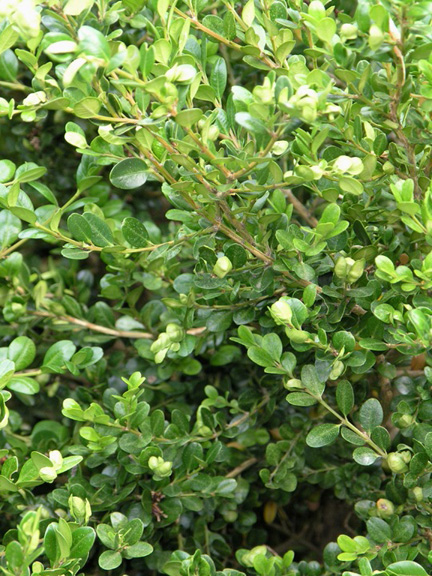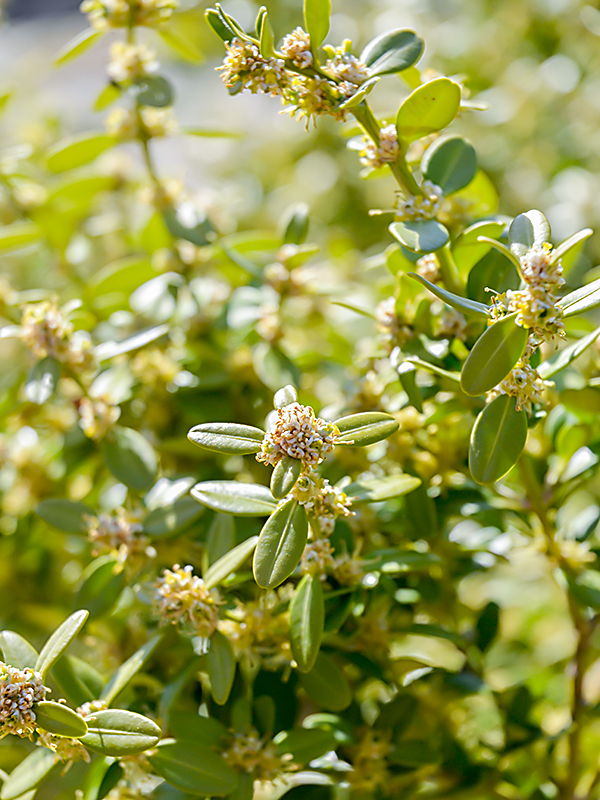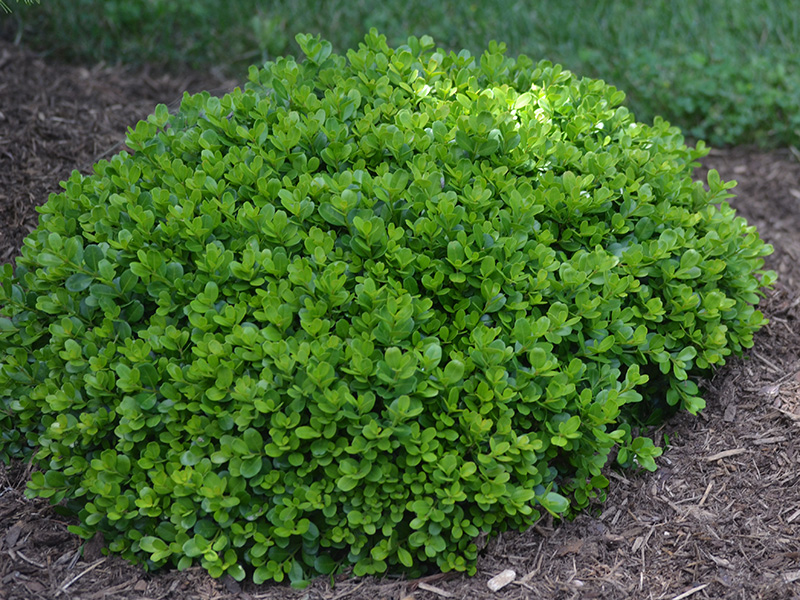
Woody > Buxus > Buxus microphylla > Buxus microphylla
Buxus microphylla
Japanese Box or Littleleaf Box
Origin: Japan, Korea.
Mike's
Opinion


"
A great shrub that looks great if left unpruned. It can easily be pruned as a focal plant, enhance the scene of any walkway or be used as a garden border due to its evergreen colour and low, dense growing nature.
Michael Pascoe, NDP., ODH., CLT., MSc. (Plant Conservation)
"
| Family |
| Buxaceae |
| Genus |
| Buxus |
| Species |
| microphylla |
| Category |
| Woody |
| Type |
| Shrub (evergreen) |
| Pronunciation |
| USDA Hardiness Zone |
| 6 - 9 |
| Canadian Hardiness Zone |
| 5 - 9 |
| RHS Hardiness Zone |
| H5 |
| Temperature (°C) |
| -10 - (-20) |
| Temperature (°F) |
| 14- (-4) |
| Height |
| 3 - 6 m |
| Spread |
| 3 - 6 m |
Photographs
Description and Growing Information
Flowering Period
| General Description |
| This particular Buxus ranges in light/dark green foliage, giving off a distinct odour that attracts bees. It generally has nice shape and can be pruned into walkway edging, topiary or garden borders. Average growth is about 4 m by 3 m. |
| Landscape |
| Can be used as a formal hedge, walkway edging and in topiary. It provides a nice accent for garden and can be used for understory planting. If properly cut back it can also be used in mass plantings or ground cover. |
| Cultivation |
| In summer this shrub prefers moist, cool, well-drained soils. Should be planted in full sun but can tolerate partial shade. Protect in winter from frost/wind burn. |
| Shape |
| The shape is a rounded pyramidal naturally, but have seen many instances of use for walkway edging and garden borders due to its dense foliage and multi-branched appearance. |
| Growth |
| Slow |
| ID Characteristic |
| Thick, dense low growing shrub. The leaves are arranged opposite of each other with no petiole. The stems have a square like pattern and produce small flowers that gives off an odour attracting bees. |
| Pests |
| If left without water, root rot can occur quite quickly. Also prone to the boxwood webworm, leaf miners and mites. As of late Boxwood blight has become a major problem both in Europe and most of North America. The fungus Cylindrocladium buxicola causes leaf spots, defoliation and even extensive die-back. The disease can be spread by water splash, tools and footwear and can survive for up to six years in the soil. It thrives in moist, humid environments but is killed when exposed to temperatures in excess of 33 °C for at least a week. The disease also affects Pachysandra, Sarocococca and Buxus balearica, sinica, macowanii, microphylla, bodinieri, glomerata, harlandii, sempervirens and riparia. |
| Bark/Stem Description |
| Stems are very thin and brittle. New shoot growth is green, while older stems are brown. Stems present a square like pattern. |
| Flower/Leaf Bud Description |
| Small terminal buds, small, yellow, ovoid with 1-2 pairs visible. |
| Leaf Description |
| The leaves are bright green, obovate, 10-25 mm long, oval with a rounded or notched tip with lateral margins. |
| Flower Description |
| White/cream inflorescences, deeply scented, flowering between April and May. |
| Fruit Description |
| There are 3 black seeds inside of a capsule, rarely visible. |
| Colour Description |
| Green/deep green in summer, yellowish-greenish and brown in winter. |
| Texture Description |
| Medium-fine textured. |
| Propagation |
| Propagate in mid-summer by taking semi-ripe cuttings from the current season's growth. Collect in the early morning using a sharp knife to cut pieces 10 - 15 cm in length. Remove all leaves from the lower third and pinch out any soft terminal growth. Dip into a number 2 rooting hormone, insert into trays or pots of cutting compost (50/50 mix of compost and sharp sand or perlite) and water well. Place in a propagator with bottom heat set at 15°C with or without mist; rooting should occur in 4 - 6 weeks. |


